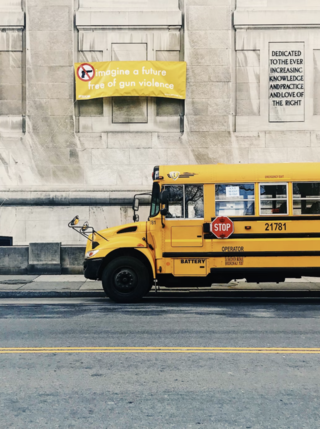Friends
Saving Students from School Shootings
New research paper can help us prevent school shootings.
Posted December 1, 2022 Reviewed by Lybi Ma
Key points
- Prior to most school shootings, other people knew about the shooter’s plans, including close friends and family.
- Most shooters displayed concerning behaviors prior to their violent attack—posting images of weapons and sharing plans.
- Many shooters felt bullied, persecuted, or injured by others prior to their attack.
- Most shooters had access to (and had used) weapons. Most also showed a preoccupation with weapons and violence.

This post is the second of a two-part series.
In the wake of school gun violence, Dr. Megan Sweet released a recent whitepaper gathering crucial policy implications and recommendations. In Part I of this series, Dr. Sweet addressed the most effective means school districts have for preventing gun violence. Here, Dr. Sweet helps us explore what more can be done to keep our students safe.
Is there a profile of a would-be school shooter? And are there warning signs?
There is no profile of a would-be school shooter—they range in age, gender, socio-economic status, and race. While students who commit violent acts do share some characteristics, those characteristics are not always predictive of future violence.
Furthermore, our perceptions of who is likely to be violent are influenced by our experiences, what we see in the media, and implicit biases that over-criminalize BIPOC youth. Because these biases can skew who we target for interventions and who we ignore, any generalizations about school shooters should be regarded as advisory.
With those caveats, there are some commonalities among past school shooters:
- Prior to most incidents, other people knew about the shooter’s plans, including close friends and family.
- Most shooters displayed concerning behaviors prior to committing their violent attack, including posting images of weapons and sharing their plans for violence on social media.
- Many shooters felt bullied, persecuted, or injured by others prior to their attack.
- Most shooters had access to (and had used) weapons. Most also showed a preoccupation with weapons and violence (Alathari et al., 2019, p. 1).
These findings can be used as a part of an early warning threat assessment system where at-risk students are evaluated and provided with intensive therapeutic interventions. Additionally, we can encourage friends and family to seek help if their loved one is expressing an interest in violence. While many are wary of getting their loved ones in trouble, the simple act of alerting police and school officials can save lives.
What actions can be taken at the local, state, and federal levels to keep our communities safe?
The federal government has a significant role to play in establishing national standards for gun safety, developing a cohesive and shared understanding of the impact of gun laws and gun violence, and bridging the various state-level gun laws and programs to create a safety net to prevent the next school shooting. It can also strengthen national gun safety legislation, including reinstating the assault weapons ban.
While the federal government can do more to centralize our approach to gun violence, states play a crucial role in regulating access to guns and promoting school safety. This includes establishing and enforcing red flag gun laws (that keep guns out of the hands of people likely to commit violence), enacting secure gun storage laws, and ensuring that school districts have established safety protocols in place.
How federal and state policies are implemented on the ground is up to local leaders and school districts. Local actions include ongoing coordination between school districts and local law enforcement, investing in school culture and mental health services, investing in school security measures, and practicing school safety drills.
Does gun violence impact any particular community or demographic more than another?
Yes. Gun violence disproportionately affects youth from low-income and underrepresented communities (Rajan et al., 2019, p. 648). Children and teens in urban areas are at a significantly higher risk of gun violence than youth in rural areas and gun violence is concentrated in Black neighborhoods in those urban areas. Everytown for Gun Safety estimates that Black children and teens are 14 times more likely to die from gun violence, and Latinx youth are three times more likely to die from gun violence, than White youth.
BIPOC youth are also disproportionately impacted by gun violence in schools. The Washington Post (2022) estimates that 311,000 students have experienced school gun violence since 1999. While Black students account for approximately 16 percent of the student population in the United States, 33 percent have experienced gun violence at school, compared to White students, who account for 57 percent of students with only 38 percent having been exposed to gun violence.
References
Alathari, L., et. al (2019). Protecting America’s schools: A U.S. Secret Service analysis of targeted school violence. United States Secret Service National Threat Assessment Center. United States Secret Service, United States Department of Homeland Security. https://www.secretservice.gov/sites/default/files/2020-04/Protecting_Americas_Schools.pdf
Cox, J. W., Rich, S., Chiu, A., Thacker, H., Chong, L., Muyskens, J., & Ulmanu, M. (2022, May 27). More than 311,000 students have experienced gun violence at school since Columbine. The Washington Post. https://www.washingtonpost.com/graphics/2018/local/school-shootings-database/
Rajan, S., Kassow, D., & Rauh, V. (2020, September 15). Gun violence as an adverse childhood experience: Reflections from research and practice perspectives [PowerPoint Presentation]. Teachers College, Columbia University. https://coloradosph.cuanschutz.edu/docs/librariesprovider151/default-document-library/npltwebinarslides_sept152020.pdf




